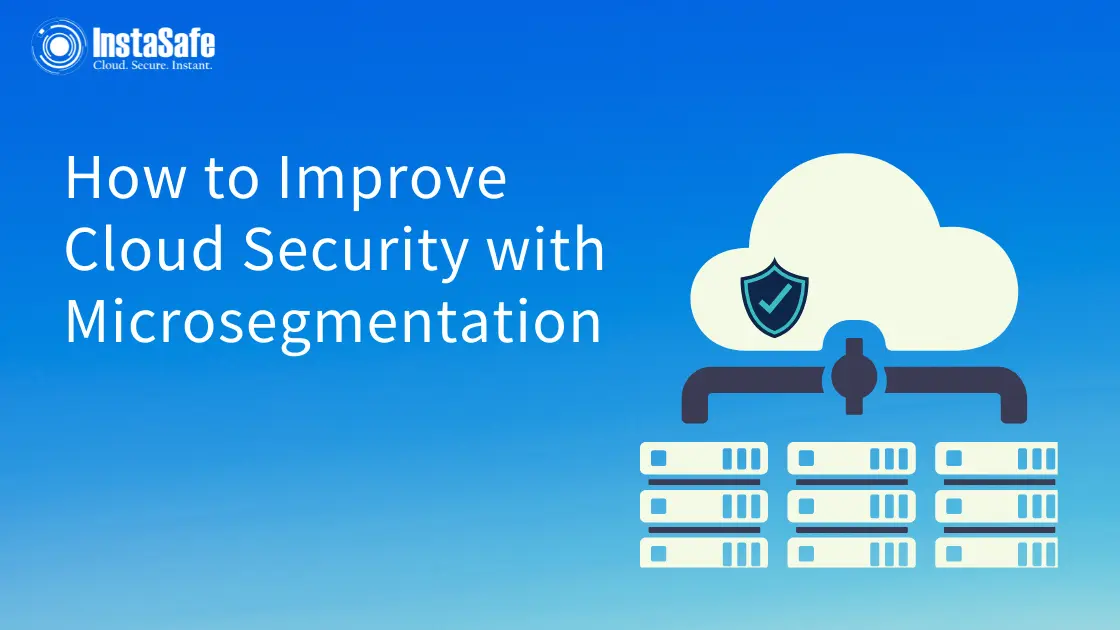How to Improve Cloud Security with Microsegmentation

Organisations continue to grapple with the ever-expanding cloud environment as they adapt to the changing needs. Cloud environments allow users to store data online and access it whenever required.
However, with growing volumes of edge-generated data and IoT (Internet of Things), businesses face new opportunities as well as risks from cyber-attacks.
Considering security risks, cloud service providers work hard to provide a secure platform for users to host and develop applications. But cloud computing has its own set of security challenges that need to be addressed.
Let’s find out the data security challenges in cloud data protection and how microsegmentation in the cloud can ensure network security.
Challenges in Cloud Security
One of the biggest security challenges in the cloud environment is a lack of data visibility and control. In the absence of complete data visibility, there is a disconnect between different databases within your organisation. Apart from this, other common cloud security issues include:
- Data Loss and Cyberattacks
- Security System Misconfiguration
- Unauthorised Access
- Denial of Service Attacks
- Threat from Malicious Insiders
- Account Hijack
- Insecure Interfaces and APIs (Application Programming Interfaces)
Why Microsegmentation?
Cyber-attacks usually involve infiltration through a vulnerable individual or system. Once infiltration occurs, the attacker can freely move within the cloud or data centre. This lateral movement has the potential to damage the organisation’s critical assets. Such security incidents are a common phenomenon on a “flat network”.
On the other hand, microsegmentation breaks cloud environments and data centres into smaller zones that can go up to individual workload levels. There are security controls at each level restricting the attacker’s ability to move laterally within a data centre or cloud in case of a breach.
In microsegmentation, applications can communicate within a segment but cannot communicate to applications outside the zone.
Providing granular control over workloads, microsegmentation thus acts as a foundation for Zero Trust Security which works on maximum use of authentication. Moreover, based on the principle of “least privilege”, microsegmentation provides an effective defence strategy over traditional security models.
Hence, by creating “dematerialised zones”, microsegmentation allows you to separate different networks from each other, reducing the attack surface.
How Can Microsegmentation Improve Cloud Security?
Whether your organisation uses a private, public or hybrid cloud infrastructure, every cloud instance or service must be isolated to reduce cyber risks. Considered an industry best practice, microsegmentation cloud security can help limit the damage to a compromised cloud asset through the following process:
- Asset Identification
Before applying security policies, it is essential to know what assets exist in the cloud environment.
Some microsegmentation techniques can automatically sync data from the cloud management platform. Once the assets are identified, you can group them according to functions or attributes or based on the organisation’s unique set of protocols.
- Application and Service Modelling
Once assets are identified, it is necessary to determine which cloud resources require microsegmentation.
Microsegmentation helps provide detailed information about the assets and their interactions. This allows enhanced visibility of the assets and their interrelationships that help determine where microsegmentation is to be applied.
- Implementing Security
Providing granular control over traffic, microsegmentation allows handling several forms of traffic in the cloud environment.
This helps security teams to customise the policies according to the needs. Moreover, microsegmentation includes security measures like application control, URL filtering, and protections via IPS (Intrusion Prevention System).
- Policy Optimisation
Once suitable policies are applied, periodic reviews and revisions are necessary to ensure optimal implementation. Microsegmentation offers granular visibility of assets allowing you to compare the current state with optimal security flow and business operations. This helps to know what policies need optimisation.
- Monitor and Refine the Process
Once microsegmentation is deployed, it needs continuous refinement and monitoring. The architecture of microsegmentation doesn’t work on a “set and forget” approach. Rather it requires constant management. When new assets or processes are included, microsegmentation tracks the changes and traffic flow. This helps to protect the new assets and allows you to tailor the architecture according to the organisation’s needs. With continuous refinement, the strategy of microsegmentation thus helps tackle cyber security threats more accurately and quickly.
Conclusion
According to the shared responsibility security model, an organisation migrating to the public cloud is responsible for the security in the cloud. Whereas the cloud service provider is responsible for the cloud’s security.
But with multiple cloud service providers and on-premise servers, cloud security is becoming difficult due to a lack of complete data visibility across the network. Hence, deploying a secure network design for microsegmentation in cloud security is the need of the hour. The security model can offer the required visibility and control over cloud assets and contain breaches in real-time.
InstaSafe solutions can provide you with greater visibility over cloud applications and granular-level access controls for devices to secure your cloud infrastructure. Also, with InstaSafe Zero Security, you can improve productivity with simplified cloud access. So, check out our prices or book a demo for free today!
Key Products
Zero Trust Application Access | Zero Trust Network Access | Multi Factor Authentication | IAM Identity And Access Management | Secure Enterprise Browser
Key Features
SSO Single Sign On | Endpoint Security | Contextual Based Access Controls | Always On VPN Connection |Clientless VPN | Device Binding | Device Posture Check | Domain Joining
Key Solutions
VPN Alternative Technology | Secure Remote Access Solutions | Cloud Application Security | DevOps Security | VoIP Security Solutions
